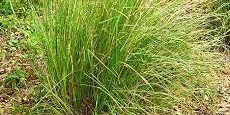Darbha Grass or Kusha Grass is scientifically known as Desmostachya bipinnata, commonly known in English
by the names Halfa grass, Big cordgrass, and Salt reed-grass, is an Old World perennial grass, long known and used in human history.
In recent medical research, Darbha or Kusha grass has been observed to block X-Ray radiation. Dharbham can be cut only on the day next to Full Moon – known as Krishna Paksha Pradamai. A Dharbham without its tip portion is not to be used for making a Ring like item known as “Pavithram”.
UNIQUENESS
It has positive charge. It is said that thunder cannot affect it. It is tied in the Kalasha of the Temple Gopurams to prevent the temple from being attacked by thunder.
Religious association
It is sacred to Ketu and is considered as Lord Vishnu in the Vishnu Purana.
Uses
The grass is used to cure dysentery, urinary disorders and is also used as an antidote. It is a good cattle fodder
and sand binder to prevent soil erosion.
MAT FOR MEDITATION
Sacred kusa Grass (Dharba Grass) arrests the harmful magnetic rays from affecting the human body. So mats are made out of this grass as a seating arrangement for Meditation.
PLUCKING
IT SHOULD BE PLUCKED ON A Shravan Amavasya day and distributed.
Vedas state that Dharbha grass is a fire which can burn even fire.
SOIL EROSION
It prevents soil erosion.
FODDER
Some cattle eat this as food.
Pigs eat the tubers near roots.





